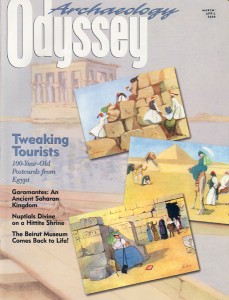Archaeology Odyssey, March/April 2000
Features
Salt from the Garamantes
It is safe to say that few, if any, readers of Archaeology Odyssey have heard of the Garamantes. For about a thousand years, from about 500 B.C. to 600 A.D., however, they lived in the southwestern part of what is now Libya; then they disappeared from history—not...Read more ›
Making the Desert Bloom
The Garamantian capital and its underground water system
The Garamantes are not just a vanished civilization; they are a much maligned, misunderstood African people. Ancient writers from the time of Herodotus (fifth century B.C.) through the Roman period depicted the Garamantes as barbarians who menaced the Mediterranean world from desert strongholds. The first-century A.D. Roman...Read more ›
Sacred Sex in the Hittite Temple of Yazilikaya
Cut into rocky pinnacles just two miles northeast of Bogûazko¬y, Turkey (the site of the ancient Hittite capital of Hattusha), are some dramatic, if puzzling, rock reliefs. These carvings at Yazilikaya (see plan and photo of sanctuary at Yazilikaya), which in Turkish means “inscribed rock,”1 wind around...Read more ›
Beirut Museum Survives
Like the stone monuments it displays, the venerable archaeological museum stands the tests of time
Now, if a king among kings, or a governor among governors or a commander of an army should come up against Byblos and uncover this coffin, may the scepter of his rule be torn away, may the throne of his kingdom be overturned, and may peace flee...Read more ›

